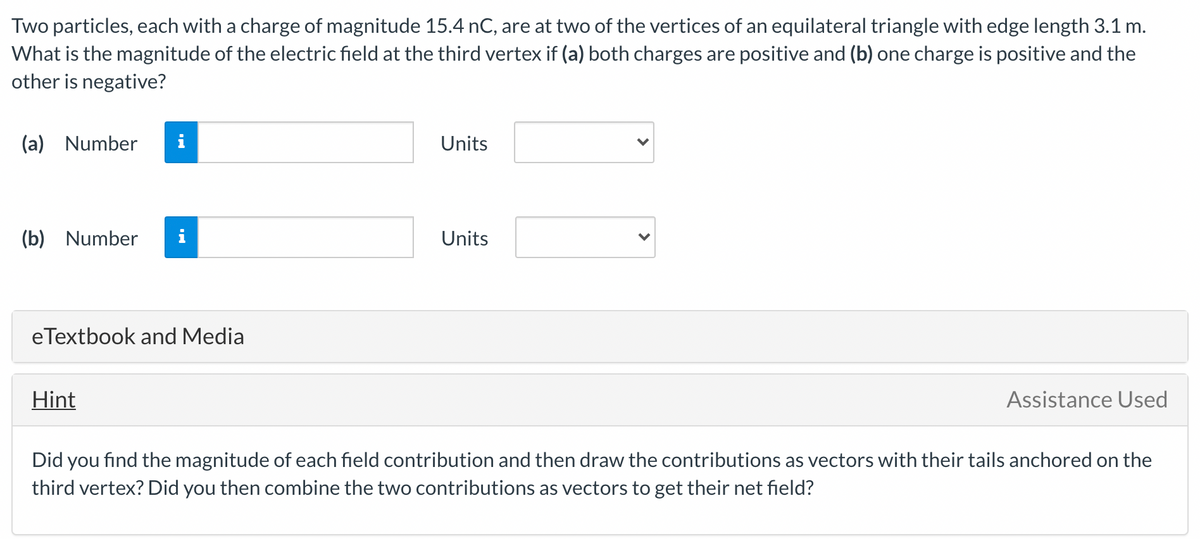Two particles, each with a charge of magnitude 15.4 nC, are at two of the vertices of an equilateral triangle with edge length 3.1 m. What is the magnitude of the electric field at the third vertex if (a) both charges are positive and (b) one charge is positive and the other is negative? (a) Number i Units (b) Number i Units
Two particles, each with a charge of magnitude 15.4 nC, are at two of the vertices of an equilateral triangle with edge length 3.1 m. What is the magnitude of the electric field at the third vertex if (a) both charges are positive and (b) one charge is positive and the other is negative? (a) Number i Units (b) Number i Units
Physics for Scientists and Engineers: Foundations and Connections
1st Edition
ISBN:9781133939146
Author:Katz, Debora M.
Publisher:Katz, Debora M.
Chapter23: Electric Forces
Section: Chapter Questions
Problem 29PQ: Two particles with charges q1 and q2 are separated by a distance d, and each exerts an electric...
Related questions
Question

Transcribed Image Text:Two particles, each with a charge of magnitude 15.4 nC, are at two of the vertices of an equilateral triangle with edge length 3.1 m.
What is the magnitude of the electric field at the third vertex if (a) both charges are positive and (b) one charge is positive and the
other is negative?
(a) Number
i
Units
(b) Number
Units
eTextbook and Media
Hint
Assistance Used
Did you find the magnitude of each field contribution and then draw the contributions as vectors with their tails anchored on the
third vertex? Did you then combine the two contributions as vectors to get their net field?
>
>
Expert Solution
This question has been solved!
Explore an expertly crafted, step-by-step solution for a thorough understanding of key concepts.
Step by step
Solved in 3 steps with 3 images

Knowledge Booster
Learn more about
Need a deep-dive on the concept behind this application? Look no further. Learn more about this topic, physics and related others by exploring similar questions and additional content below.Recommended textbooks for you

Physics for Scientists and Engineers: Foundations…
Physics
ISBN:
9781133939146
Author:
Katz, Debora M.
Publisher:
Cengage Learning

Principles of Physics: A Calculus-Based Text
Physics
ISBN:
9781133104261
Author:
Raymond A. Serway, John W. Jewett
Publisher:
Cengage Learning


Physics for Scientists and Engineers: Foundations…
Physics
ISBN:
9781133939146
Author:
Katz, Debora M.
Publisher:
Cengage Learning

Principles of Physics: A Calculus-Based Text
Physics
ISBN:
9781133104261
Author:
Raymond A. Serway, John W. Jewett
Publisher:
Cengage Learning
